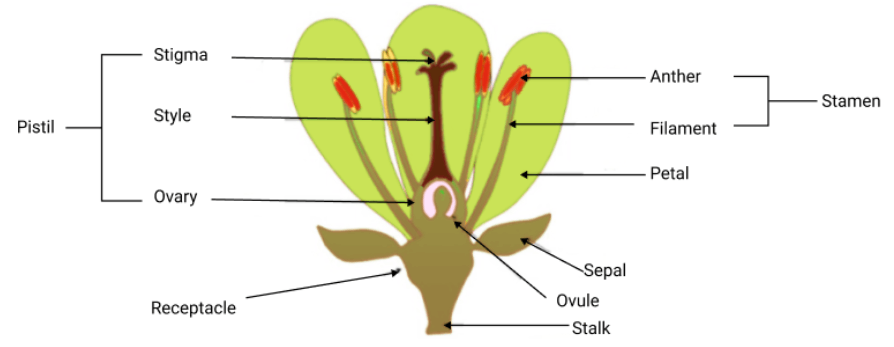Reproduction in Plants Class 7 Extra Questions and Answers Free PDF Download
FAQs on CBSE Important Questions for Class 7 Science Reproduction in Plants - 2025-26
1. Which Questions are Most Likely to Come in the Class 7 Science Exam Paper?
Some of the most common questions to come in the class 7 science exam paper are filling in the blank questions, definition questions, differentiating between two concepts and very importantly, diagrammatic questions. The diagrammatic questions can come from any of the chapters, but most commonly from the physics and biology chapters. The other questions are likely from any of the other chapters in the book, thus, it is important to be thorough with all the concepts of all the chapters. While it could be considered guesswork which questions will most likely come in the exam, taking a look at the important questions and previous question papers are helpful.
2. What all is Included in the Reproduction in Plants Chapter in Class 7 Science?
The Reproduction in Plants chapter in class 7 science includes the following topics:
Modes of reproduction in plants.
Asexual reproduction
Vegetative propagation
Budding
Fragmentation
Spore formation
Sexual reproduction
Identifying the parts of a flower
Pollination
Fertilisation
Fruits and seed formation
Seed dispersal
Mentioned above are the topics which are part of Reproduction in Plants, chapter 8 of class 7 science. They are important topics to learn because without plant reproduction, life on earth will be finished as we know it, and it is of incredible importance to be aware of such processes taking place around us.
3. Do the NCERT Solutions for Class 7 Science Chapter 8 provide accurate answers?
The Solutions for Class 7 Science Chapter 8, which can be downloaded in PDF format free of cost from Vedantu's website, are absolutely correct. It was created by subject-matter specialists and renowned instructors. They not only have an extensive understanding of the CBSE curriculum, but they also have practical experience with it. As a result, they regularly alter the answers in accordance with the NCERT guidelines. You can expect the most accurate answers adhering to the syllabus as well as elaborate explanations as well.
4. What is sexual reproduction in plants?
The process by which blooming plants reproduce sexually is called pollination. Male sex organs are known as the stamens, and female sex organs are known as the pistils and can be found in the flowers to facilitate reproduction. Reproduction in plants is characterized by both self-pollination as well as cross-pollination. A plant's own pollen fertilises its own ovules, which is known as self-pollination (or self-fertilisation). Agents of dispersion, such as bees etc., play a significant role in the pollination process by transferring the pollen from one flower to another. To know more and practice questions, students can download the Vedantu app.
5. How can I download the Important Questions for Reproduction in Plants Class 7?
The Important questions are easily available on the Vedantu site.
Click on this link-Important Questions for Class 7 Science Chapter 8.
The webpage with Vedantu’s Important questions for Class 7 Science Chapter 8 will open.
To download this, click on the Download PDF button, and you can view the solutions offline free of cost.
You may always go to the Vedantu website and engage with different professors who can help you understand the chapters in a straightforward manner if you need extra help with this or any other chapter.
6. What is the importance of reproduction Class 7?
We call it reproduction since it's the process through which parents produce new organisms. As a result of reproduction, different species of plants and animals do not go extinct on Earth. In order to maintain ecological equilibrium and ensure the survival of life on Earth, this process is essential. Living creatures require reproduction to ensure that their species survives generation after generation. It preserves a population's variety as well as its inheritance. Hence, reproduction is very crucial for all living beings on the planet.
7. What is asexual reproduction?
Asexual reproduction allows a person to reproduce without involving another member of the species. Asexual reproduction is demonstrated by the division of a bacterial cell into two daughter cells. For example, you may take an embryo from one parent plant and get it to regenerate itself into an entirely new plant by employing asexual propagation techniques. The new plant that is created is genetically identical to its predecessor. In asexual propagation, the plant's vegetative components, such as stems, roots, or leaves, are used.

























